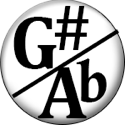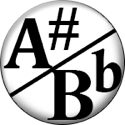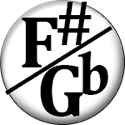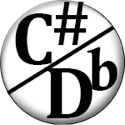Augmented Triad Arpeggios - All Inversions

Hi, this is Hub Guitar.
We're going to do an augmented triad arpeggio. There are alot of uses for this, especially in jazz and blues. It will often show up on a dominant 7th chord. For instance, you can play this arpeggio based on the root of the V7 in a blues. So if you're playing a C blues, when the G7 comes, you can play G augmented arpeggio for an interesting sound.
Now, the augmented triad is what's called a symmetrical structure. That means that mathematically, its notes are chosen in such a way that each inversion of the chord is exactly the same shape. And because each chord is the same as its inversions, each inversion of the chord is also another augmented triad. And furthermore, there are only four augmented triad chords and therefore only four augmented triad arpeggios, since each triad could be considered any one of the three different triads it contains. For instance, C augmented, E augmented and G# augmented could all be considered the same as they are all inversions of each other.
Long story short: this arpeggio is pretty easy: you just learn one shape.
However, we are going to do it in all inversions just to show you how it works.
So here's the F augmented root position arpeggio:
I just want to point out that the last root, F, can be moved to the B string if you want to make it a little easier.
Okay, here's the A augmented arpeggio, or the first "inversion" of the F augmented arpeggio, if you will.
And here's the G# augmented arpeggio.
Great, so practice these arpeggios and find a way to apply them to your own playing.
Below are arpeggios for augmented triads, all inversions. Learn them all, and then learn to apply them all to your playing.
F Augmented Arpeggio, Root
The “F” on the high E string can alternately be played on the second string.
F Augmented Arpeggio, 1st Inversion
F Augmented Arpeggio, 2nd Inversion
Wait, what’s going on here?
You’ll be pleased to know that the augmented structure is symmetrical, which means that when it’s inverted, the shape is the same. That’s because the structure is built using only major thirds. Whenever you build a structure using only one interval, it will be symmetrical.
Key Tasks
- Practice the arpeggios over an F+, Fmaj7♯5, or F7♯11 chord.
- Practice all of the “different” arpeggios.
- Find out: what augmented arpeggios are equal to F augmented?
- Find out: in total, how many unique augmented arpeggios exist?
 As the creator of Hub Guitar, Grey has compiled hundreds of guitar lessons, written several books, and filmed hundreds of video lessons. He teaches private lessons in his Boston studio, as well as via video chat through TakeLessons.
As the creator of Hub Guitar, Grey has compiled hundreds of guitar lessons, written several books, and filmed hundreds of video lessons. He teaches private lessons in his Boston studio, as well as via video chat through TakeLessons.











